lutron caséta pico teardown
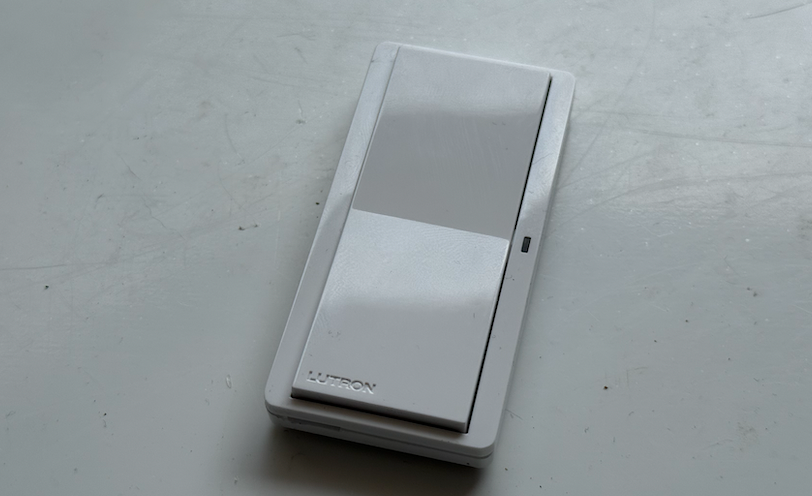
I’ve been messing with Lutron Caséta smart switches around my home recently. I wanted to see what was inside one of my Pico remotes (model number PJ2-P2B), so I took it apart.
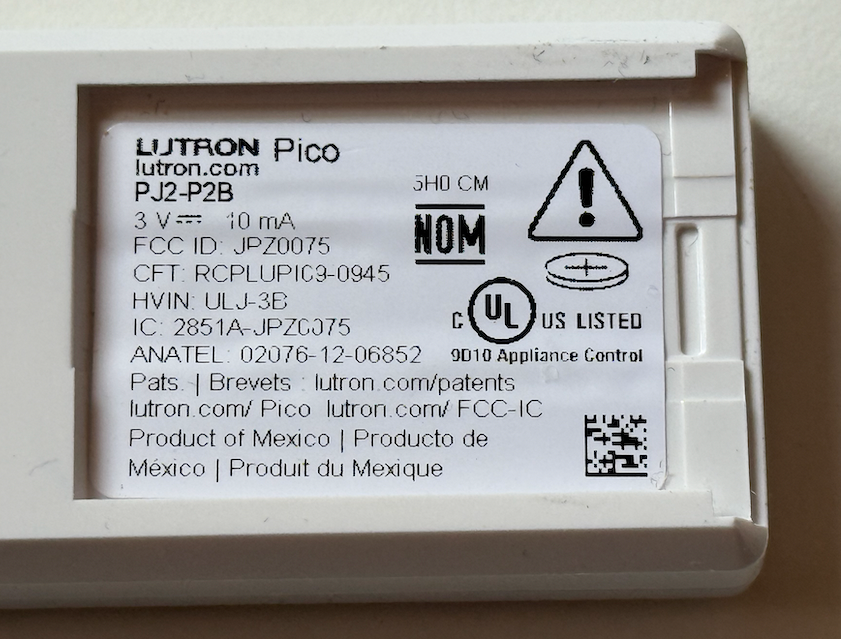
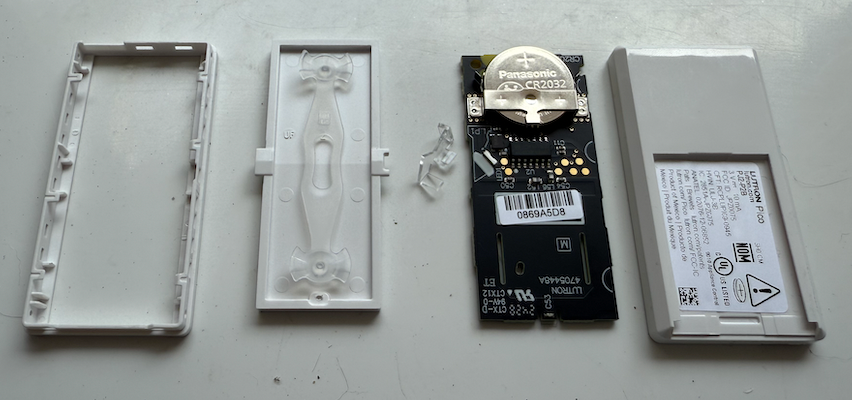
Inside is a CR2032 coin cell which supposedly lasts up to 10 years, and people on the web agree.
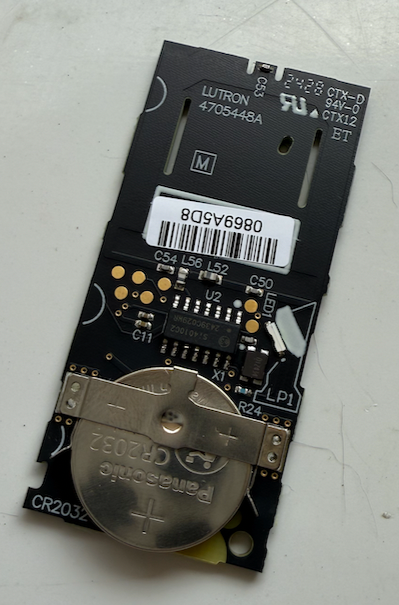
All the components live on the back of the motherboard, except two metal dome switches for the on/off buttons.
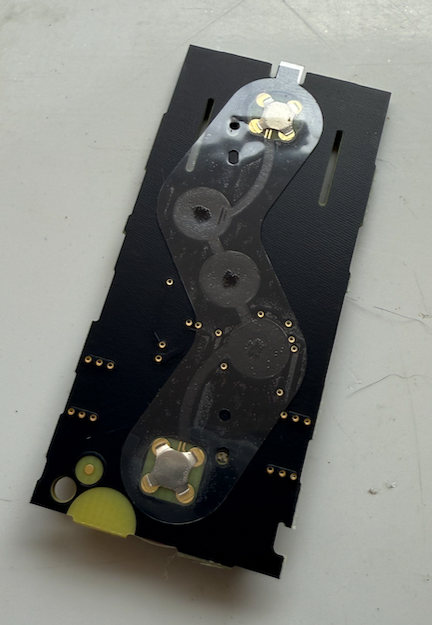
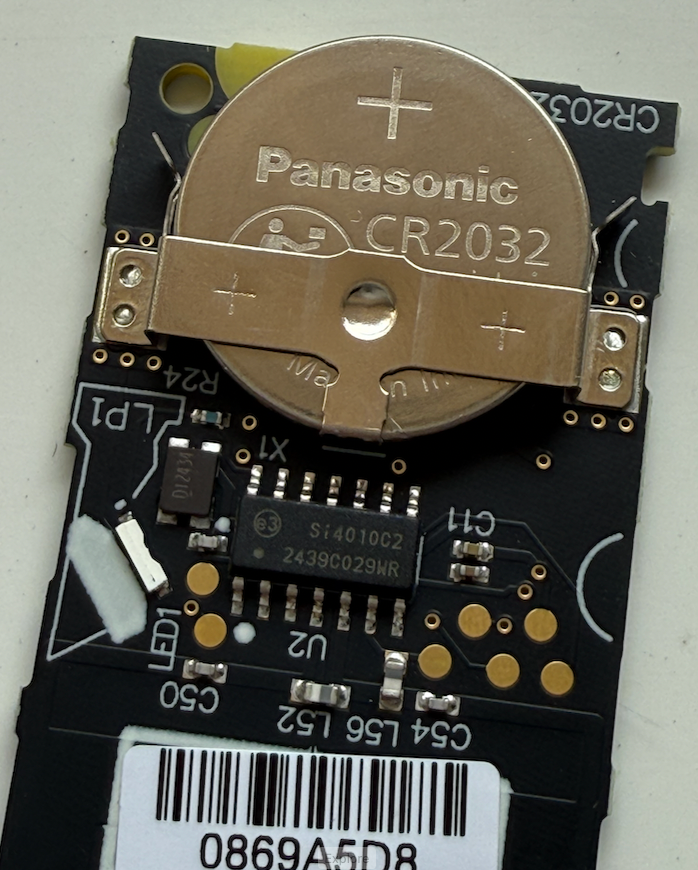
There’s also a loop antenna surrounding the entire bottom half of the backside of the board, though it is difficult to make it out.
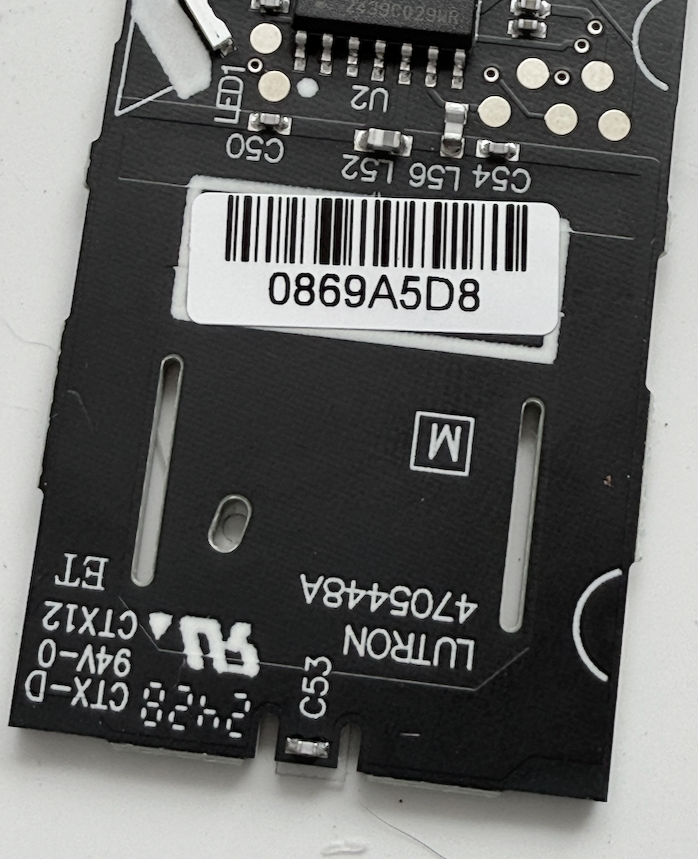
The main chip is an Si4010-C2 from Silicon Labs. This is a low-power sub-GHz RF transmitter. Datasheet.
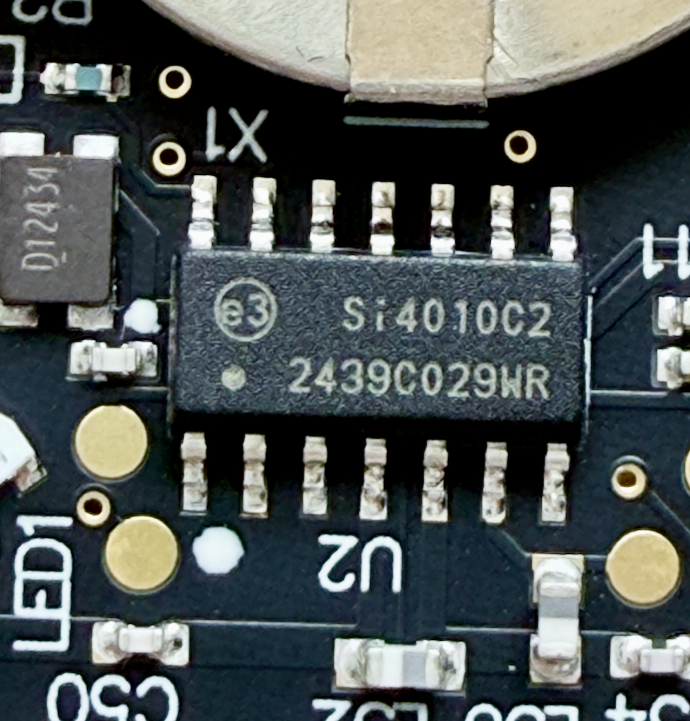
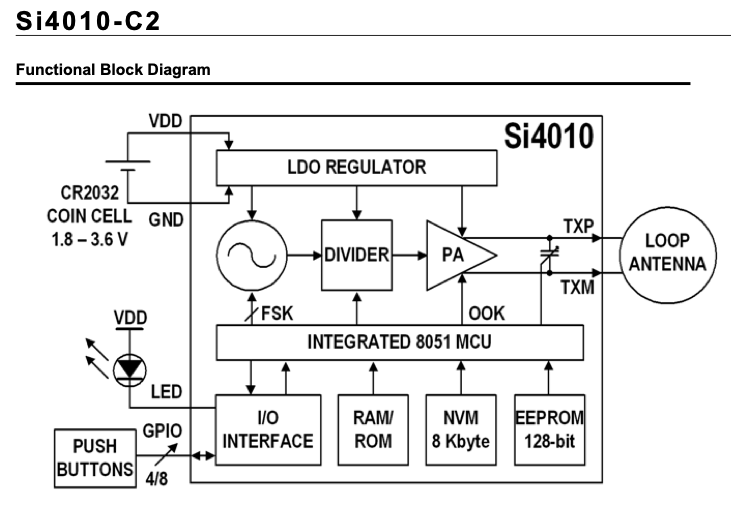
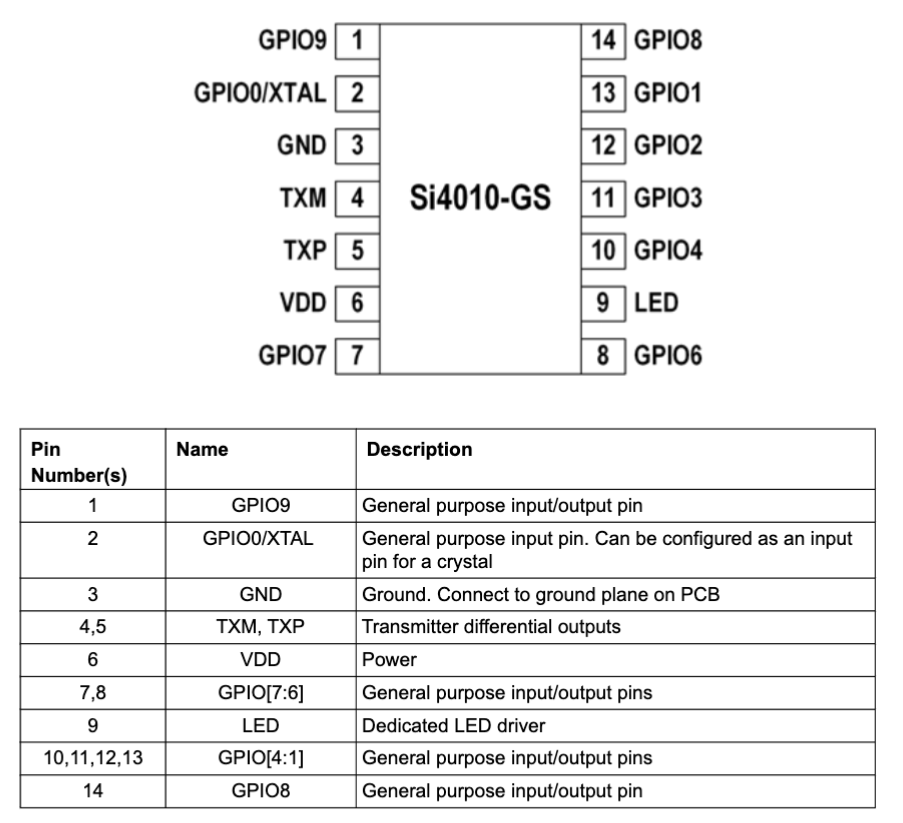
From the diagrams, it is clear to me that this chip is very purpose-built for an application like a simple remote control. It’s a simple enough circuit that you could easily build your own with a protoboard and a few components. The chip can be purchased on DigiKey in small quantities for about 4-5 bucks each.

Of course if you wanted to make it work with the Lutron system, you’d have to reverse engineer their protocol. I wouldn’t be surprised if that info is already on the web.
Anyway, that’s a look inside the remote. I’m putting it back together now 🙂 It’s going on the wall of my stairwell. If you’re interested in seeing more Lutron teardowns, I found this article on All About Circuits by Mark Hughes from 2016 that is pretty neat. There’s a clearer picture of the loop antenna on the Pico, too.